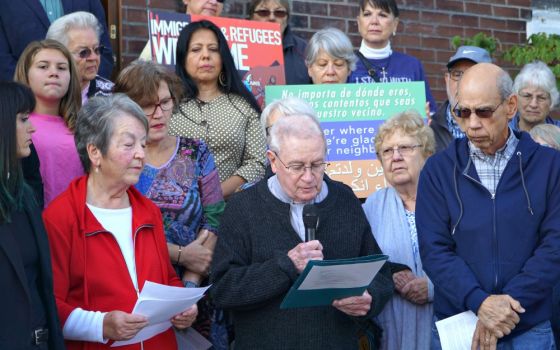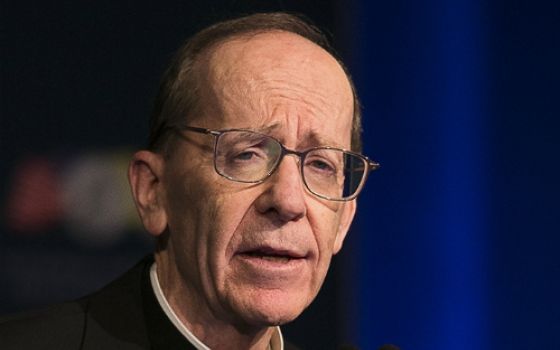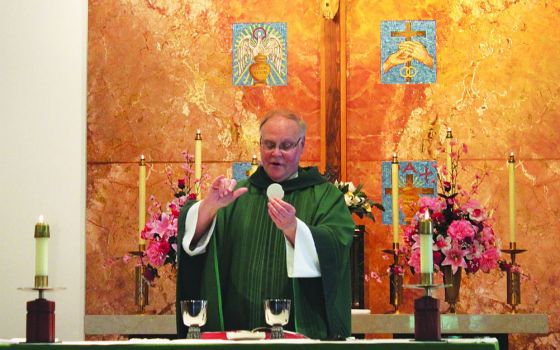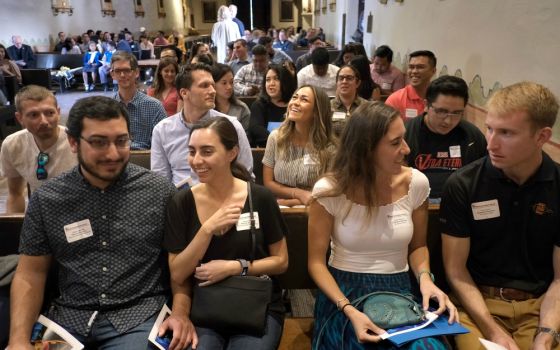Eleven years ago, I wrote a book titled Holy Land USA: A Catholic Ride Through America's Evangelical Landscape.
In it, I suggested that Catholic pastors take a look at what was happening with evangelical megachurches. Inspired by the Willow Creek congregation outside Chicago, evangelicals were tapping into the power of good old-fashioned American business marketing, finding out what people wanted in a church and delivering it to them.
Willow Creek, an independent congregation, was established in the 1970s, free from denominational constraints, via a process of intensive surveys of what people in the growing exurbs were seeking in a church. Willow Creek became famous for its non-churchy look, welcoming small communities and contemporary music. A visit there researching the book indicated that Wednesday night gatherings, held in a shopping mall-like food court, were as important to the congregation as Sunday morning worship.
The model has been copied over and over, and the end result are massive evangelical congregations dotting the American landscape. Many are filled with former Catholics.
Catholic pastors are beginning to pay attention thanks in part to a growing number of businesses and nonprofits intended to assist them in a time when many baptized Catholics have stopped going to church.
During the course of the NCR research, I was surprised to find out how many such groups exist, imploring Catholic parish leaders to take seminars in the search for ministerial/organizational success.
The granddaddy of these groups is RENEW International, which does not so much follow the Willow Creek model, but it does share a reliance on small groups intended to galvanize parish life.
RENEW preceded Willow Creek and is based largely on Vatican II theology. It grew out of renewal movements popular with Catholics in the 1970s with the intent of bringing that energy into parish life via small faith sharing groups. The idea, popular in Latin America, is that by bringing Catholics together to reflect upon the Scriptures, parishes will be transformed.
Other organizations, heavily borrowing from the megachurch model, have sprung up in the past decade. They go by different names, described in a series of articles posted on the NCR Field Hospital blog, and focus more directly on the need for modern business practices and marketing in the development of parishes.
Catholic Leadership Institute, Parish Catalyst, Amazing Parish, and other organizations focus on leadership training. They have different approaches but a similar emphasis: Catholic parishes can no longer wait for people to come to the pews. There has to be a concerted effort to bring them in. And when newcomers arrive, or, in many cases, return, they cannot be allowed to simply gravitate anonymously to a back pew. They need to be identified and welcomed, and offered programs to get involved in church life.
Marti Jewell, associate professor of pastoral theology at the University of Dallas, said that such groups bring the insights of modern management techniques to parishes. They are most helpful in assisting pastors supervise their staffs.
"Pastors and parish staffs have little training in management or supervision," she said. Traditionally, seminaries focus on training priests; it has largely been left up to dioceses to train pastors.
Many Catholic parishes, particularly in the growing South and Southwest, are de facto megachurches, with more than 10,000 members. Much parish membership in today's church is based not on geographic parish boundaries but on personal choice. Managing such enterprises is no easy task.
But the training groups need to realize that corporate management does not translate directly into a parish setting, said Jewell. Sometimes such training "tries to take a model from the outside and impose it on a Catholic parish. It's a different bottom line with parishes. It's not dollars, the bottom line is the kingdom."
In large parishes, the traditional model of a pastor helping individuals one-to-one is no longer feasible. In the Dallas diocese, for example, there are now 21,000 Catholics for every priest.
The goal of today's pastor, said Jewell, "is animating a community to help each other out."
The critique Willow Creek faced in the evangelical world can apply here as well: is this Catholic lite, an effort to make hard truths easier? How does this phenomenon respond to Pope Francis' efforts to reach the marginalized, which despite his personal popularity is, in practice, often difficult and not immediately popular. And extensive studies of the Willow Creek megachurch model indicates that these groups, much like Catholic parishes, have difficulties holding on to their people, with high attrition rates after five years.
Can the field hospital model operate within this framework of a renewed marketing effort for parishes? How does this model work with growing numbers of Latinos? In poor urban parishes that are financially stressed but have a strong, if small, spiritual and social outreach?
These are the questions raised by a new model of parish being formed by renewal and training groups, bringing the modern parish into a world where a parish is selected largely by personal choice. There is widespread agreement that the traditional parish model of if you build it, the Catholics will come, has largely evaporated, and that the evangelical megachurch down the road have honed outreach techniques that Catholic parishes can take lessons from.
[Peter Feuerherd is a professor of communications and journalism at St. John's University in New York and contributor to NCR's Field Hospital blog.]
We can send you an email alert every time The Field Hospital is posted. Go to this page and follow directions: Email alert sign-up.




